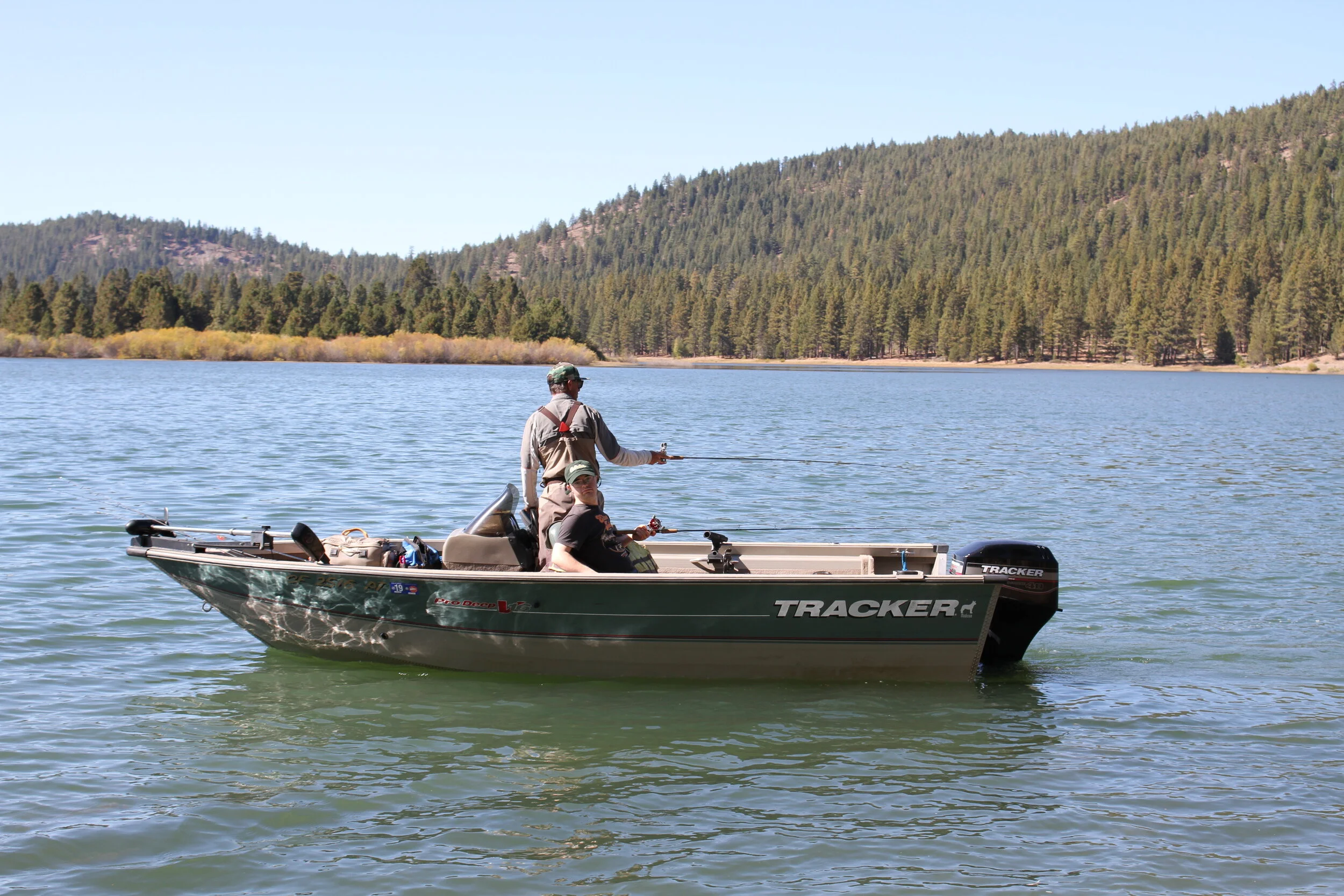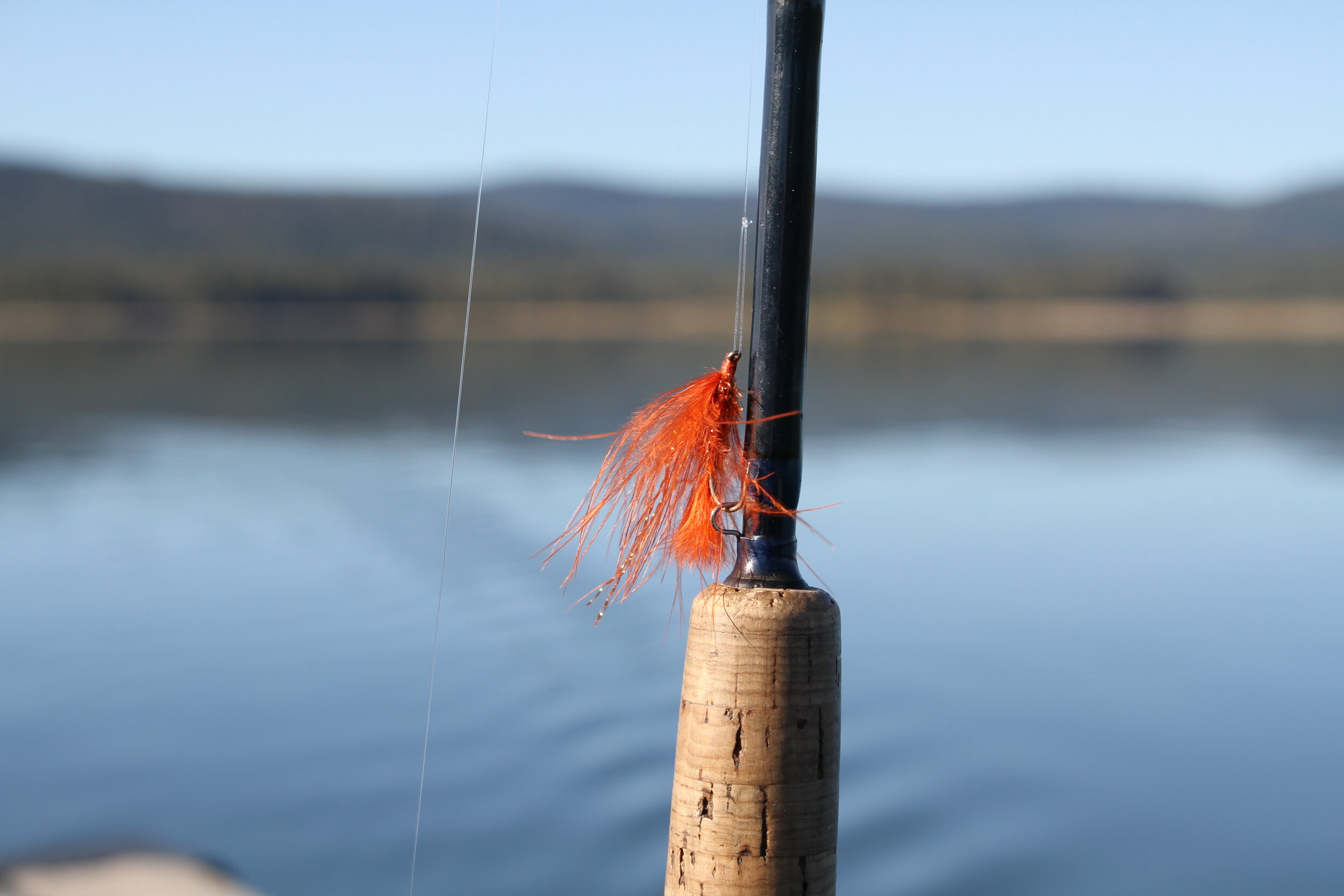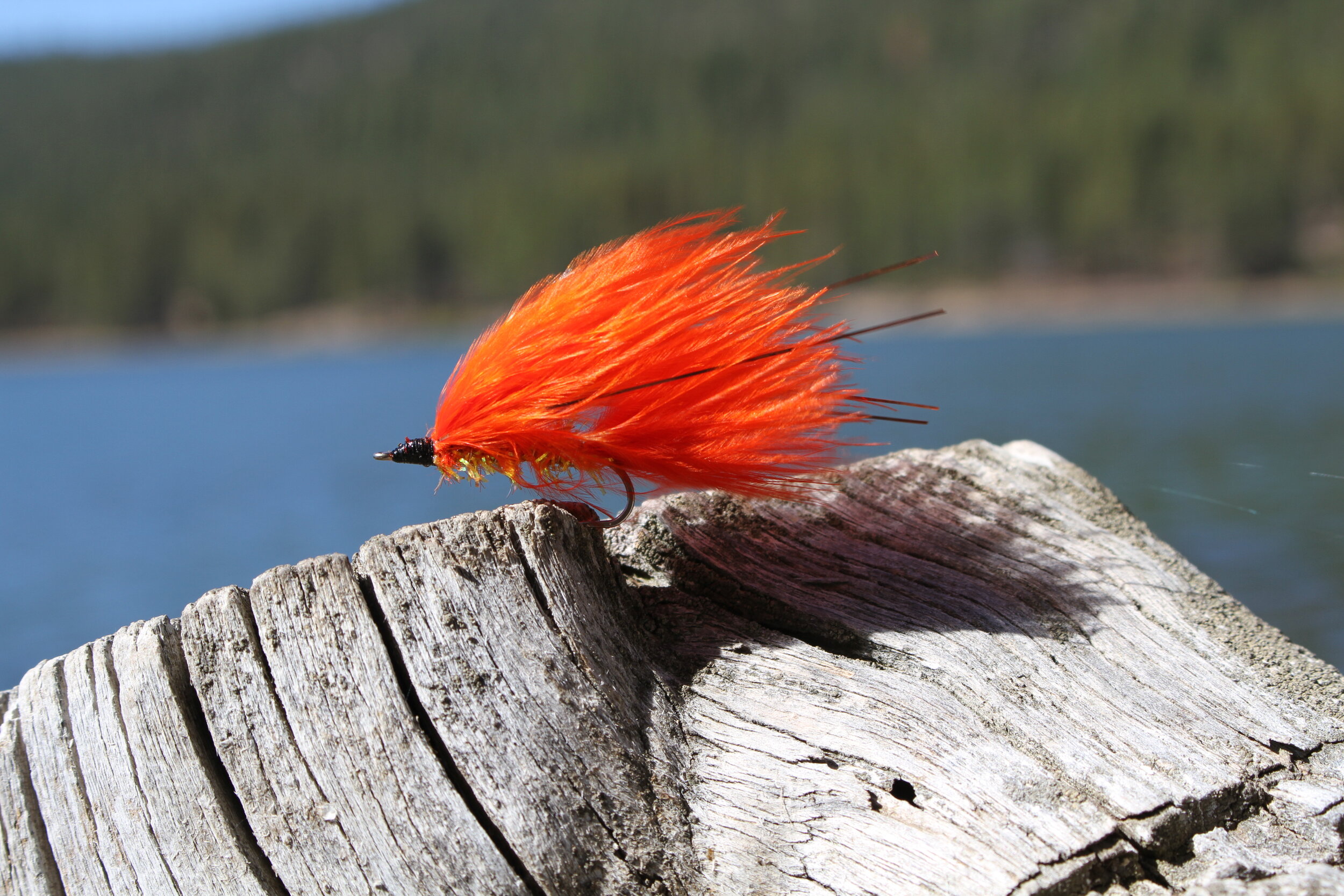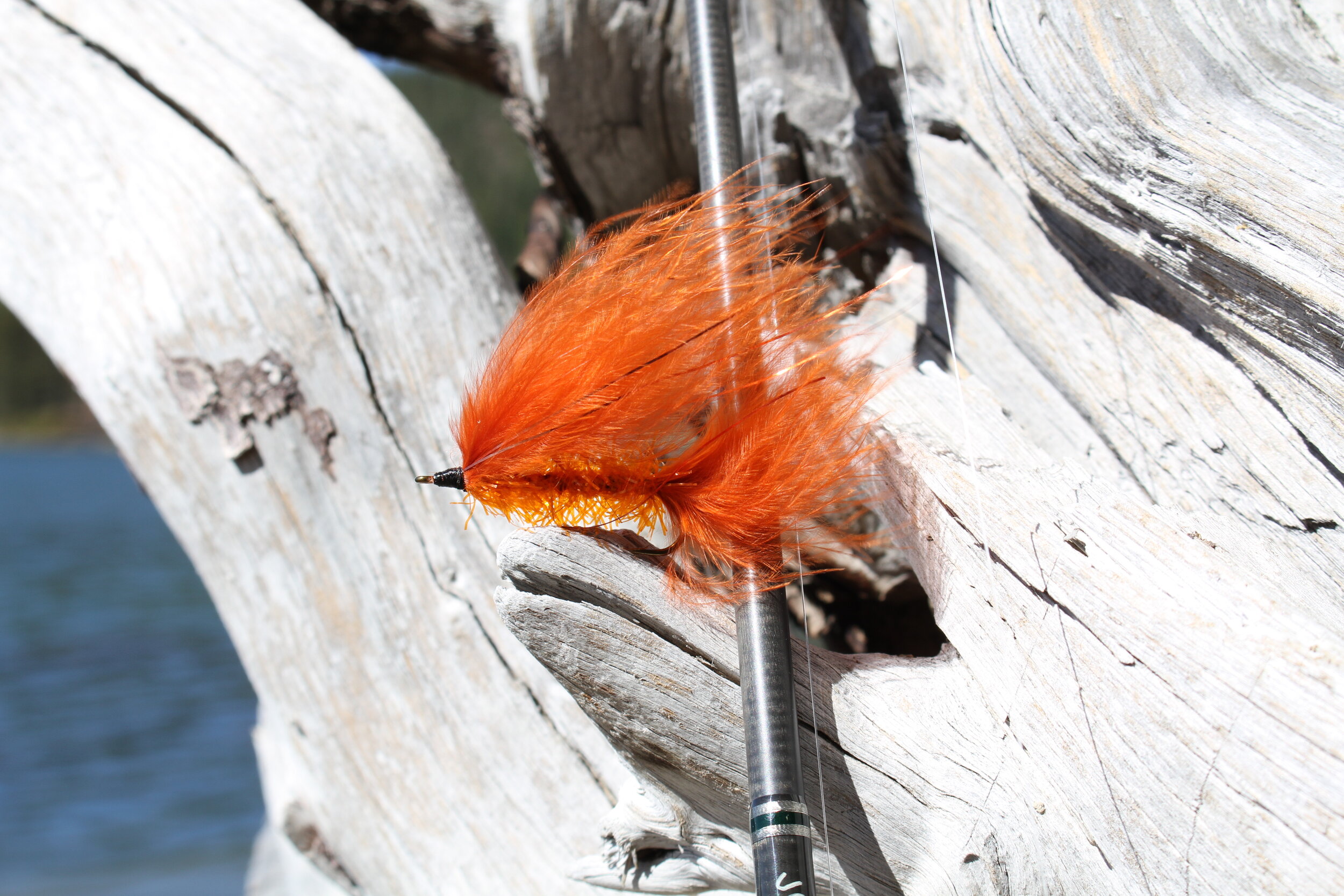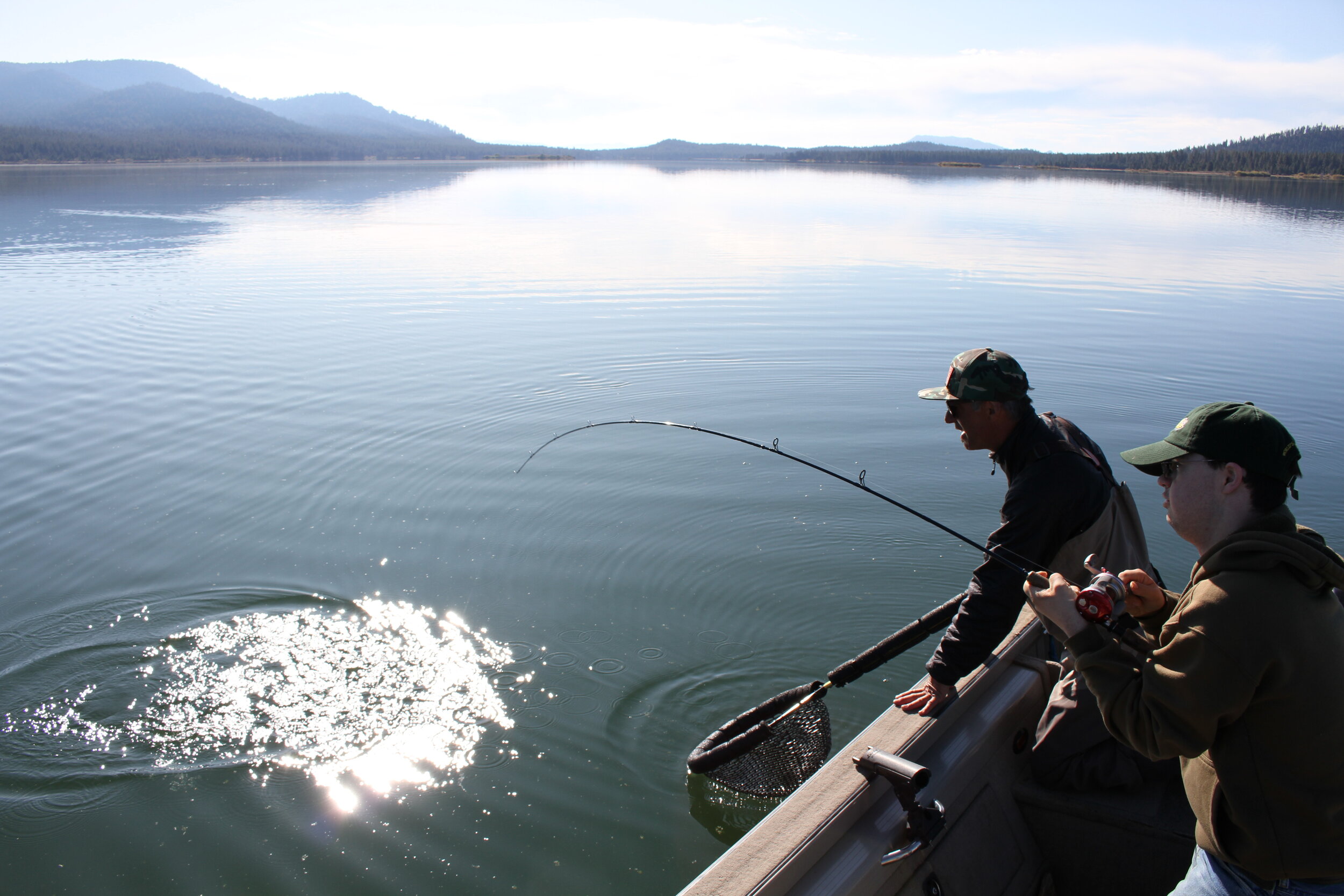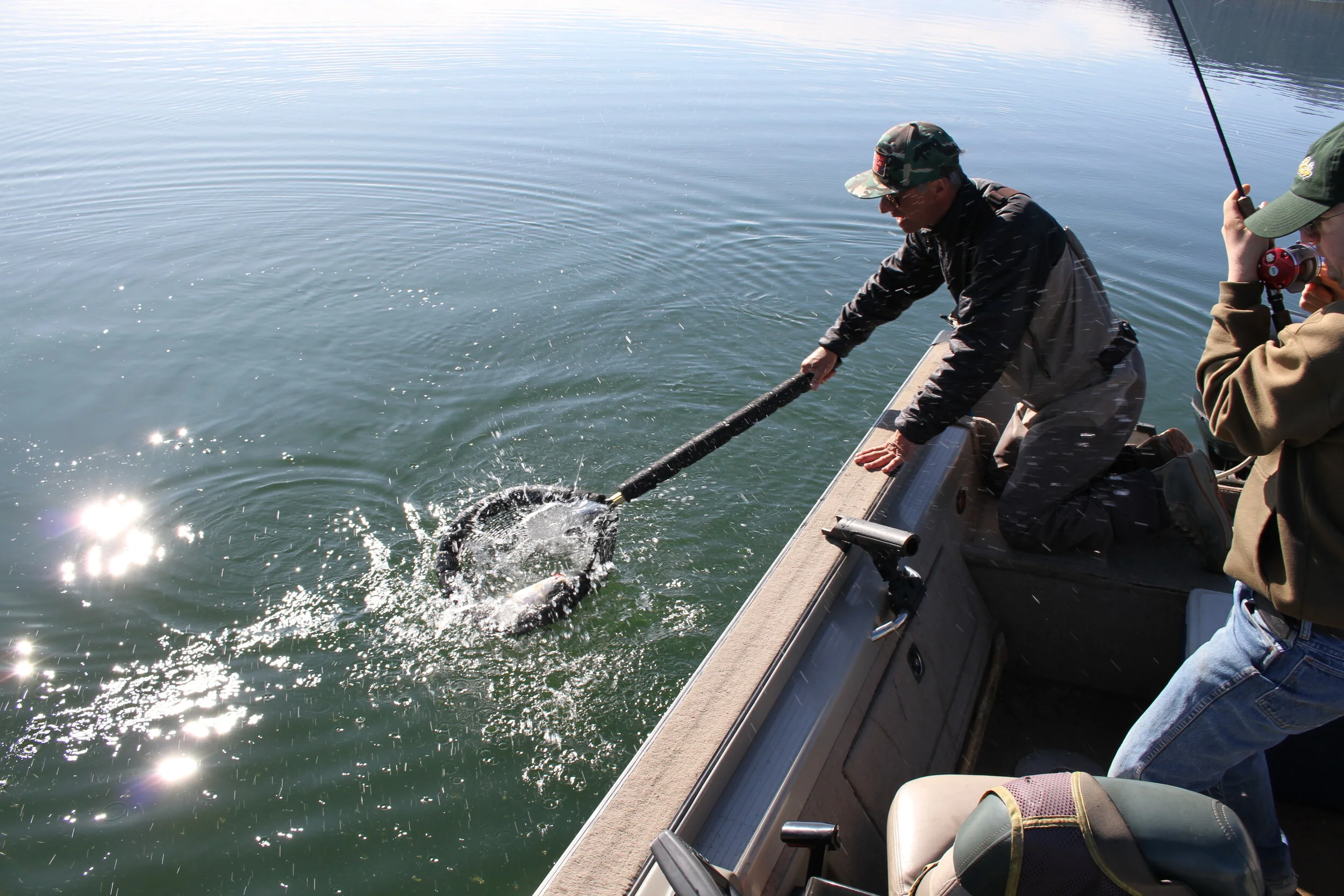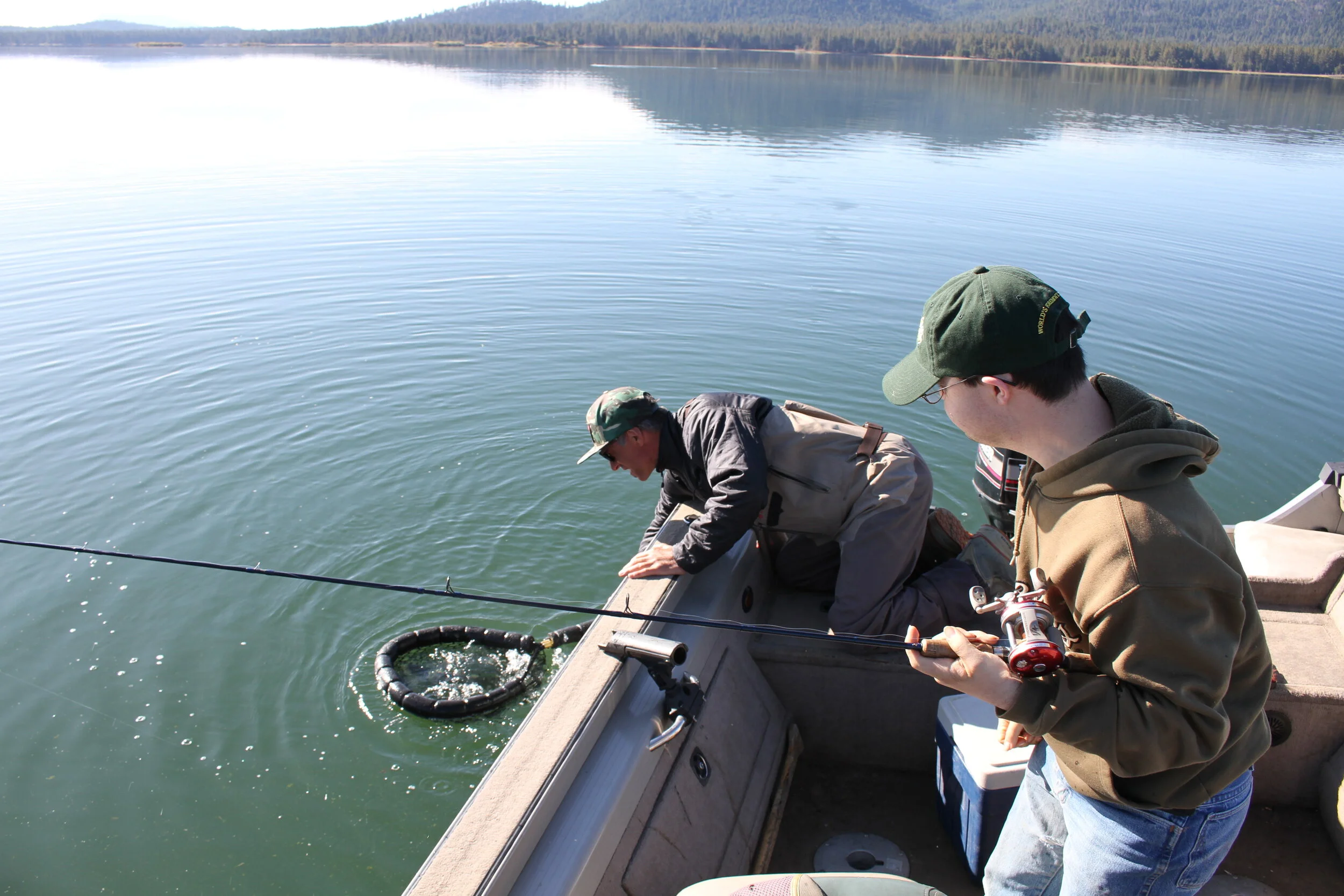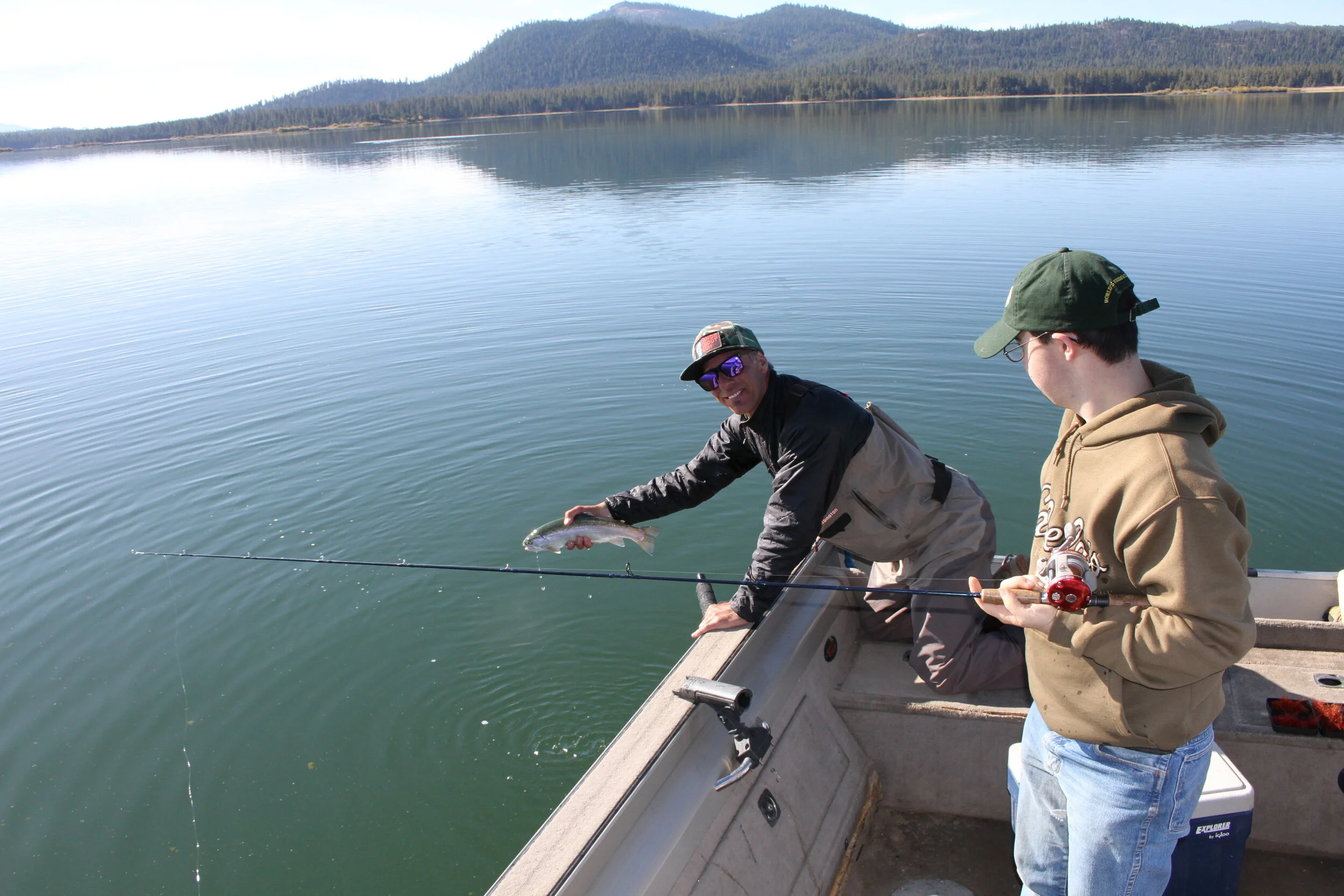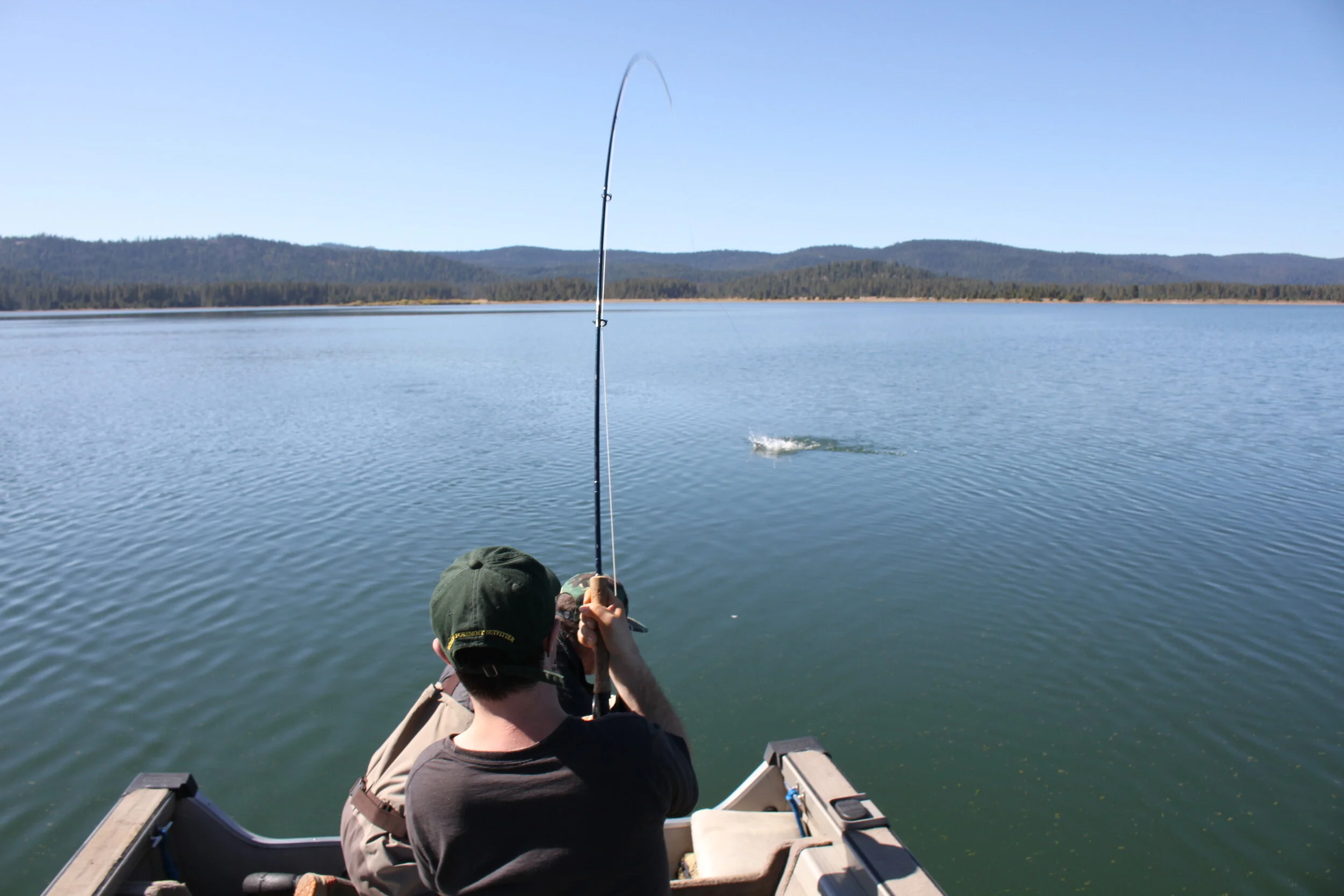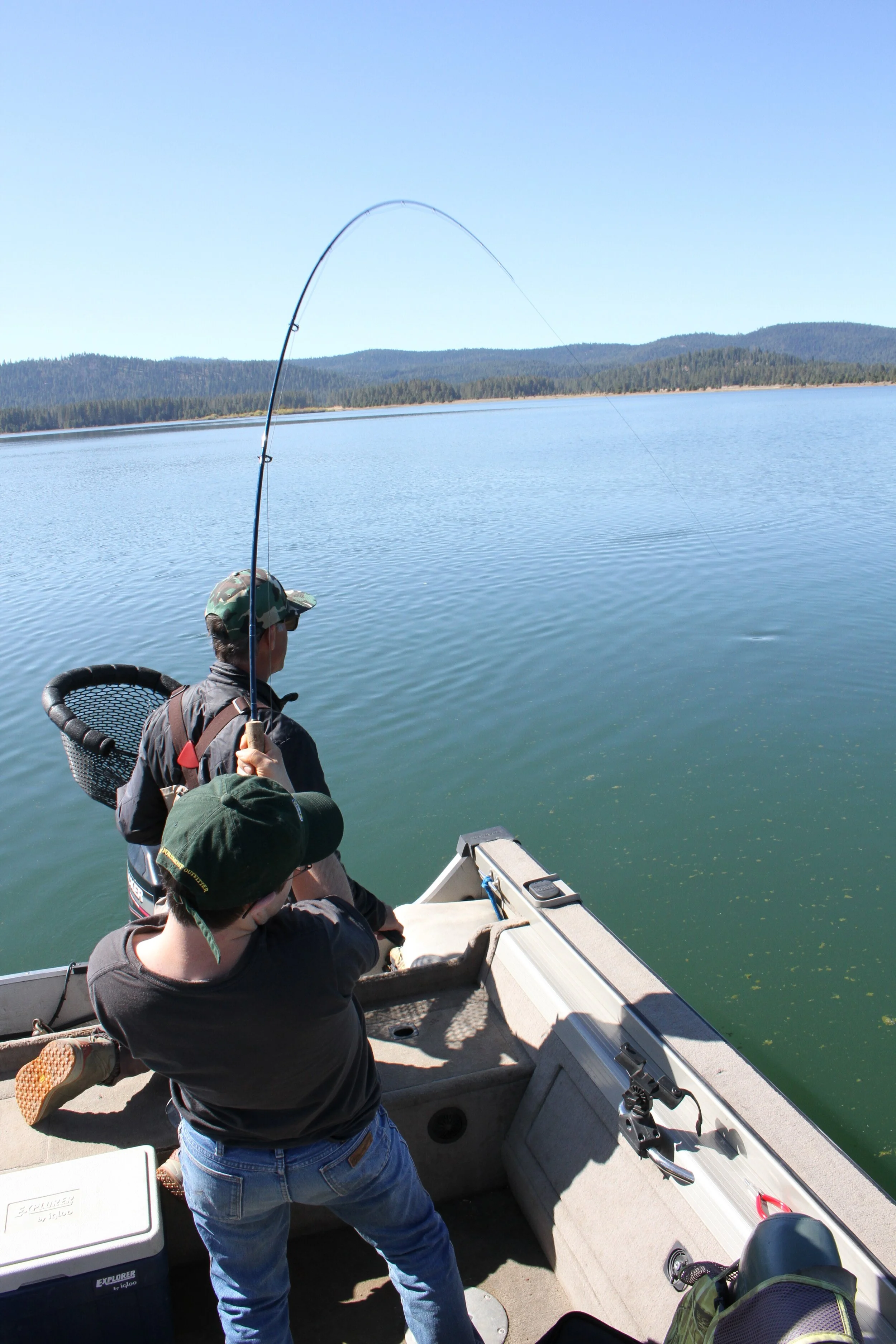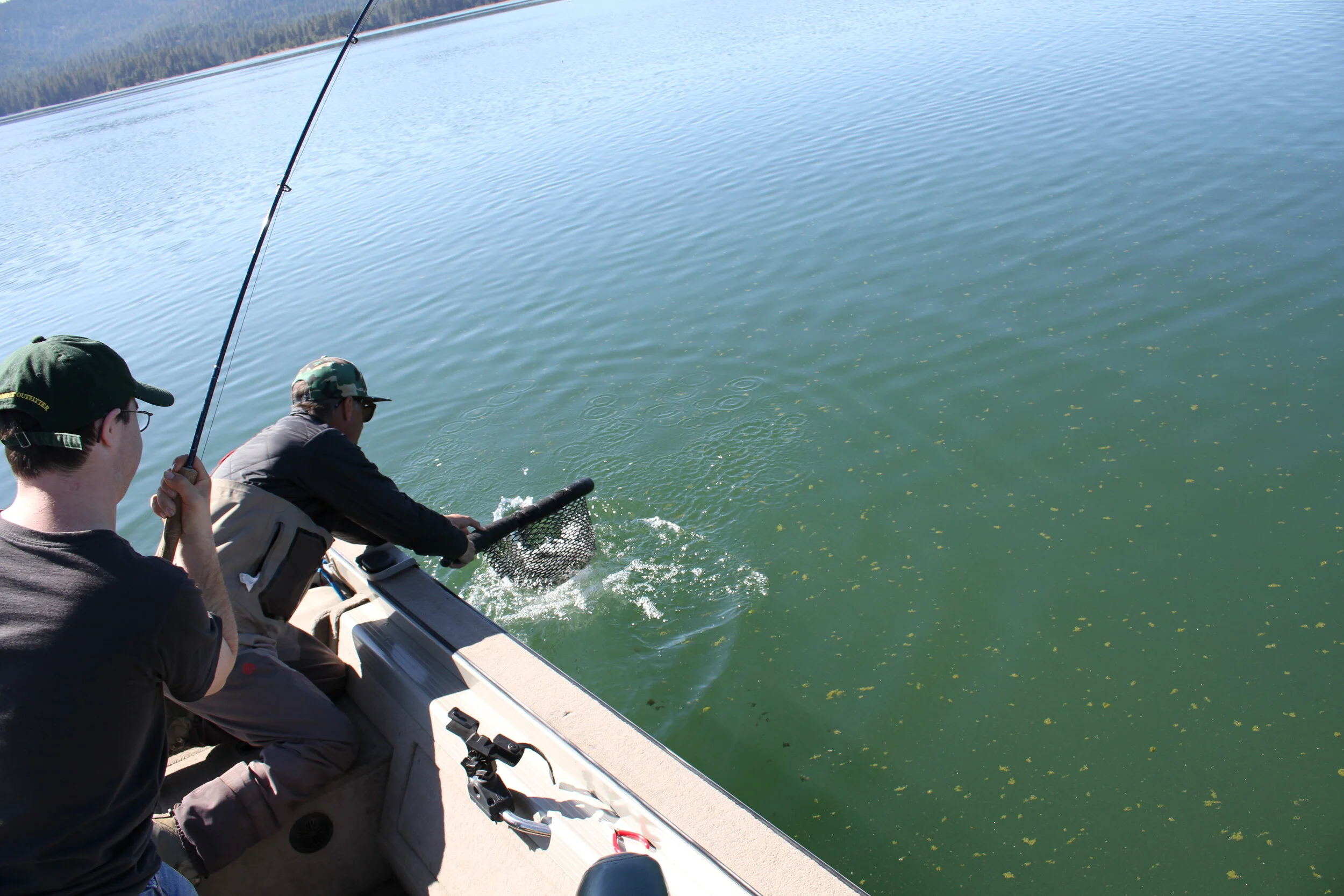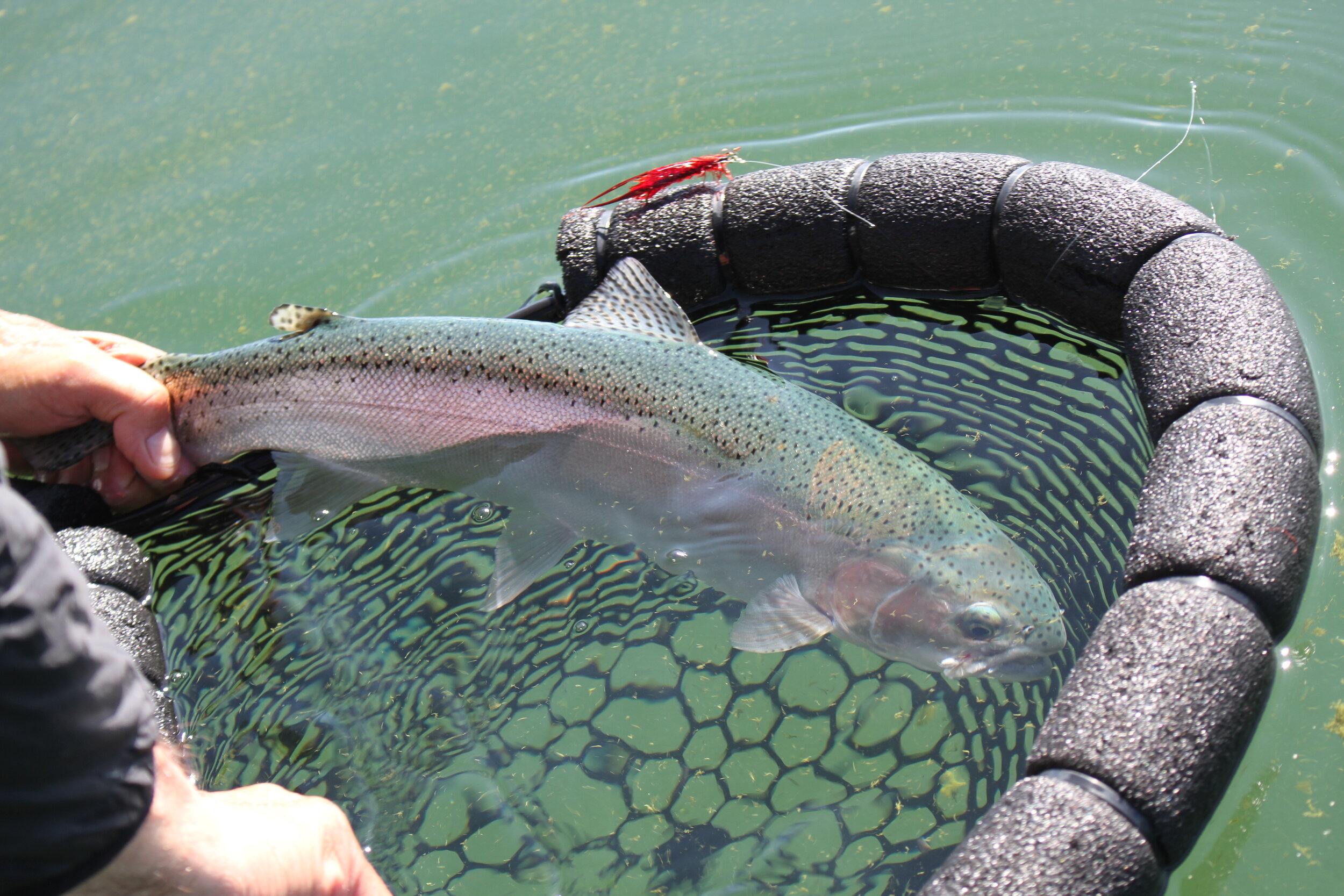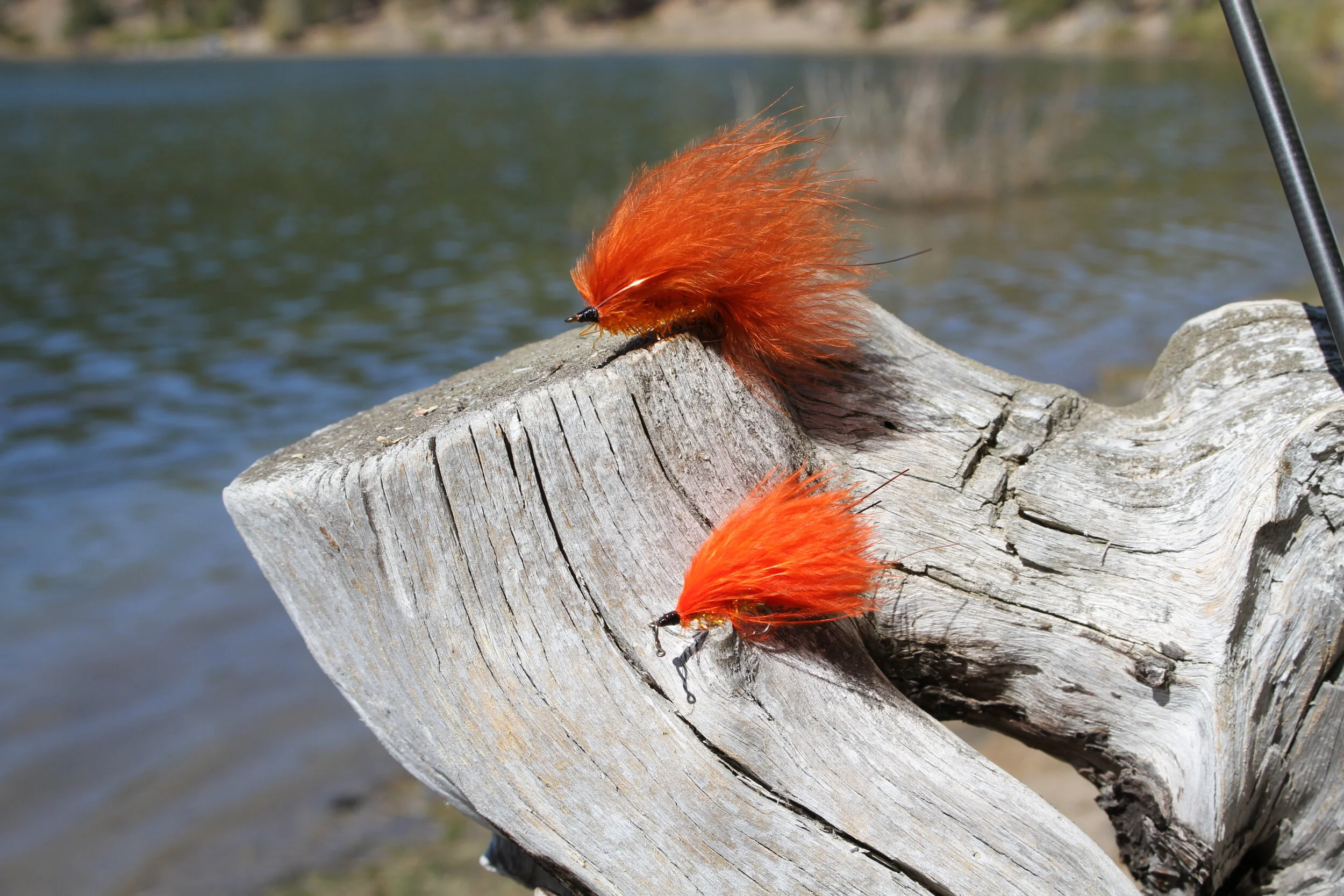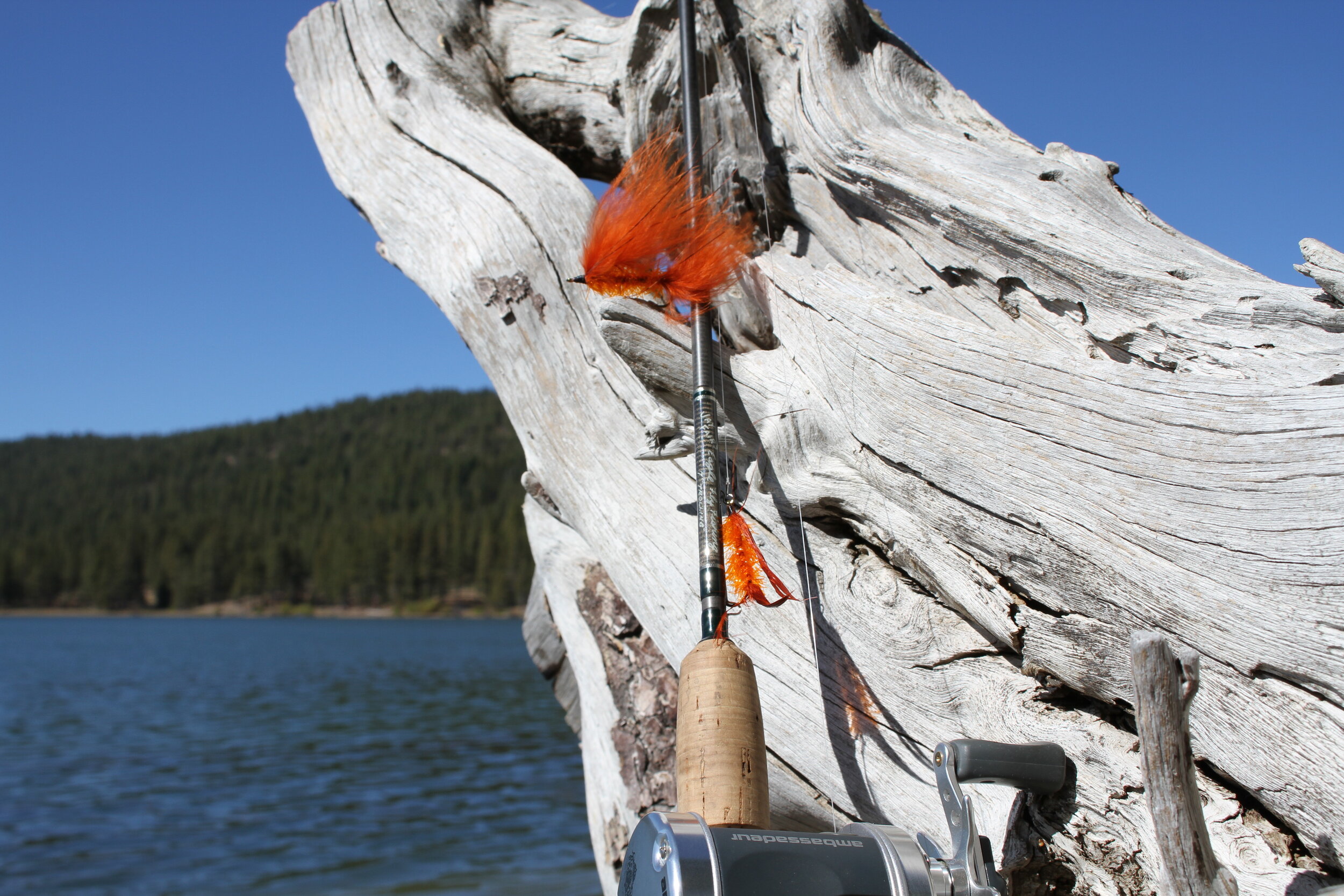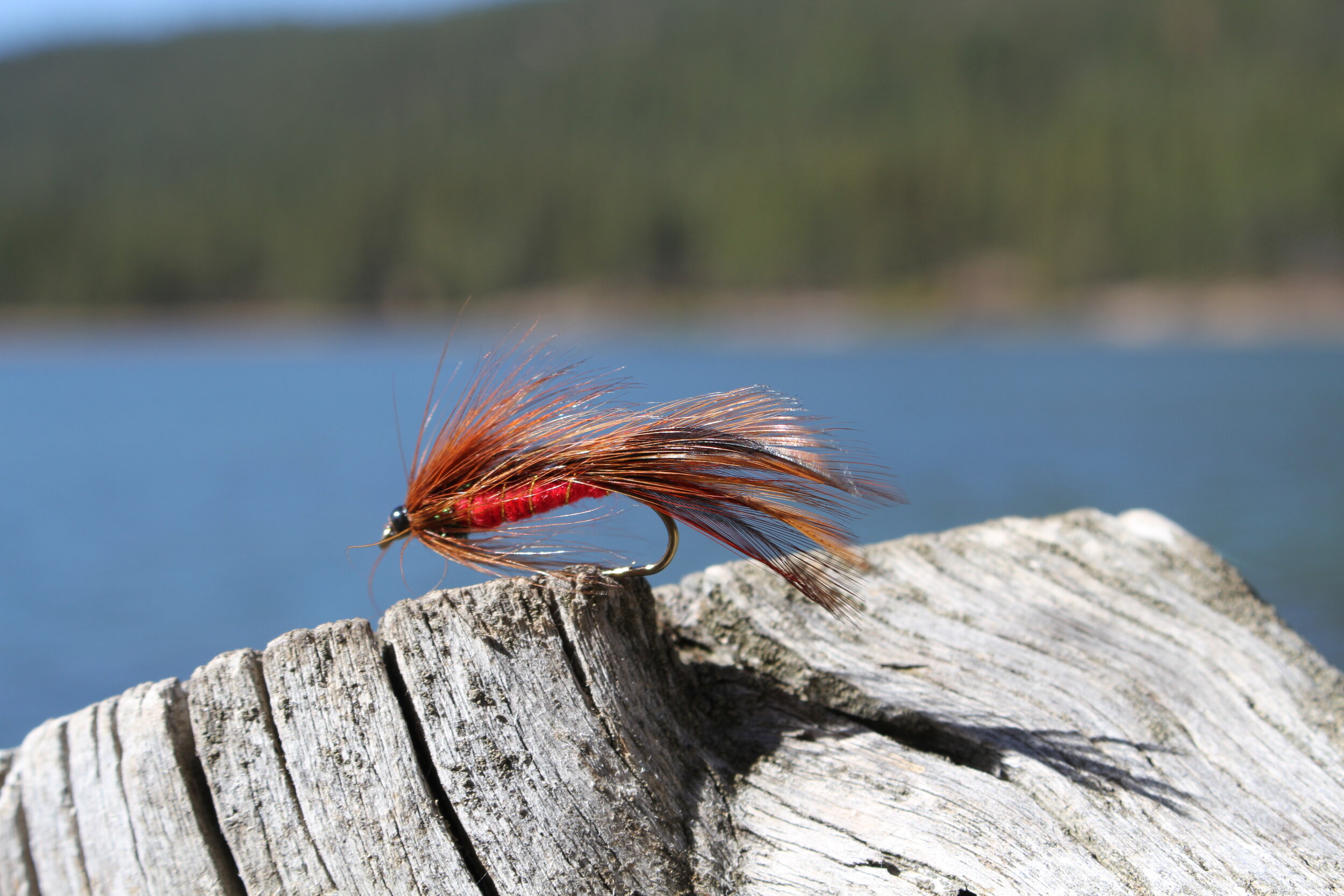October has arrived and with it the signs of Fall are coming on. The aspens are showing a hint of yellow in the high country but green is still the dominant color. The water temps in the Sierra lakes are dropping through the 50's.
This week my son Colin and I went up to Lake Davis to fish with Jon Baiocchi http://www.baiocchistroutfitters.com/ . Lake Davis had been one of the best trout lakes in the Sierra prior to the pike debacle. I fished there in late spring 2019 with very little success. Jon has been guiding on the lake recently and doing well trolling flies for trout. He invited Colin and I to fish with him on Monday, 10-07-2019.
Lake Davis was 57 degrees the two weeks ago ( 9-25-19) with clear water. When we were on the lake the temp had fallen to 54 degrees and the lake was green, a sign that the lake had “turned over”. During the heat of summer the water stratifies into temperature layers. As things cool off in the fall, the water can mix, bringing material from the bottom up to the top and often changing the color of the water. The effect for anglers is the fish are no longer confined to the cool depths. They can be at the top all day long. These are ideal conditions for long line trolling.
Jon is most known as a traditional fly fishing guide, spending most of his trips on Sierra rivers. But when conditions are just right in the fall he will take clients trolling with flies. He learned the technique decades ago fishing with Jay Fair on Lake Davis. Most of the flies we fished on Monday were the Jay Fair style but down sized. Jon has found that on Davis the rainbows will consistently hit smaller trolling flies, 1.5” to 2” long. The same is true for anglers trolling spoons on Davis, smaller is better. The other common denominator is the color scheme. A look in Jon's trolling fly box and you will see many shades of brown/orange/copper/rust. For the spoon trollers, copper-redhead is a top choice. This color range gives a lot of contrast in green stained water.
We did not get on the water before 9:00 am, it is not necessary to get out early in the fall. It is a 2.5 hour drive each way from home. We were up at 4:30, out by 6:00, at the lake by 8:30. When we arrived Jon had his boat at the dock and he pointed out rising fish fifty yards off shore. The lake has been planted this fall and there were good numbers of them still near Honker Cove. We left these fish behind and headed to the north end of the lake in search of bigger fish.
Davis is a big lake, with lots of places that trout can be after the turn over. Jon's first plan was to look for trout feeding at the surface. We had our flies 120 feet behind the boat. We would head toward feeding fish and change course as we passed them to get our flies to swim through them.
Other conditions Jon was looking for were areas with out too much vegetation to foul our lines, water exposed to what breeze there was, putting a ripple on the surface of the water and where the lake bottom dropped off quickly in depth. Jon has been fishing on Lake Davis for decades and he knows “trolling lanes” that have produced fish consistently through the years. This year the lake is extraordinarily high due to our recent heavy winter. This has changed things a bit and not all of his favorite haunts produced for us.
I learned a new technique from Jon this trip, When we would get hit by a trout and not get hooked up, he would immediately speed up, accelerating the fly away from the fish. Quite often this would be followed up by a jarring strike and fish-on. Is it one fish that misses the fly and chases, or is it another fish seeing the food get away and is in a position to get it? The distance the fly travels between strikes I estimate to be 20 to 30 feet or more. I do not have the answer other than the increase in speed put fish on the line.
We were off the water by 1:30, not a long day, but we had well over a dozen good rainbows to the boat in four and a half hours. The food chain at Lake Davis is driven by the soil below the surface. It is a flooded meadow. Lakes with green water grow fish faster than clear lakes in granite basins. Part of the poor productivity of Davis in recent years is due to low trout planting numbers. That is being changed this year and the future for Lake Davis trout fishing looks bright.
TESTING NEW FLY PATTERNS
This trip I spent time testing new fly patterns.
I have down sized some of the Jay Fair colors from a #4 down to a #8, substituting “Small Shuck” for the “Large Shuck” as the body on the hook shank and shortening the wing & tail feathers.
I also am bringing back “THE HOT ONE” pattern, burnt orange wing & tail with a bright orange body. I am changing the name to “BURNT ORANGE” due to the confusion with the “Hot Orange” color.
This trip I tested the Dark Spruce Matuka at Davis with good success. I plan on adding a number of Matuka style trolling flies which are very popular in New Zealand where they were developed.
If you enjoyed this piece please forward to a friend.
In stock I have limited quantities of the #8 Jay Fair trolling flies in Hot Orange, Olive Leech, Tui Chub, and Black. For those who have stuck with me to the end of this post, an offer: If you order any Jay Fair Trolling Fly I will send along at no charge one of the #8’s of your choice, one fly per order. To get this, after placing an order, e-mail me requesting your free #8 fly with color choice ( denispeirceflies@gmail.com ). Title the e-mail #8 JF Fly. This offer lasts until October 31, 2019 or while supply lasts. If your color of choice is gone I will substitute another one.
Denis Peirce


